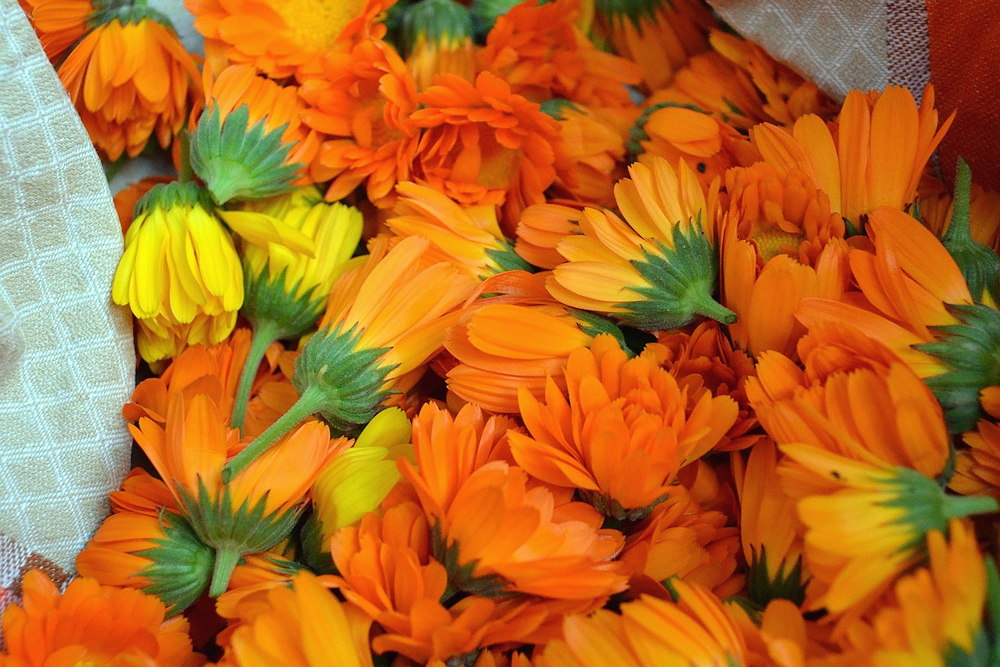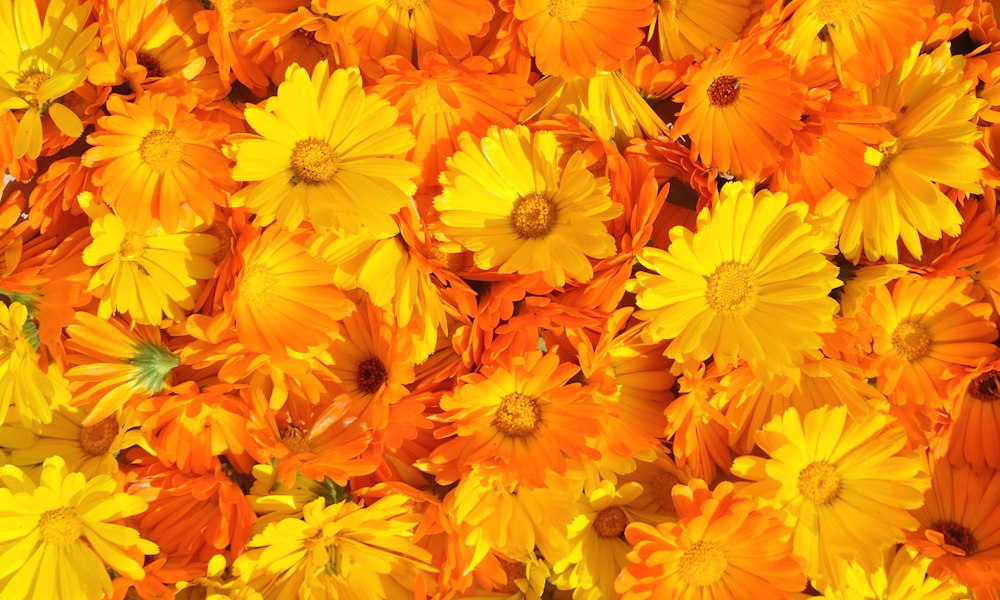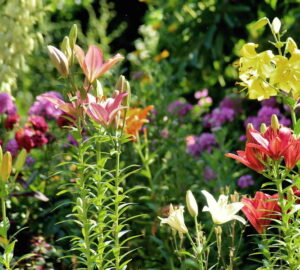Pot marigold, scientifically known as Calendula officinalis, is a captivating herb celebrated for its vibrant golden flowers and numerous medicinal properties. With a history dating back centuries, this versatile plant serves as an attractive addition to any garden while also offering a plethora of health benefits.
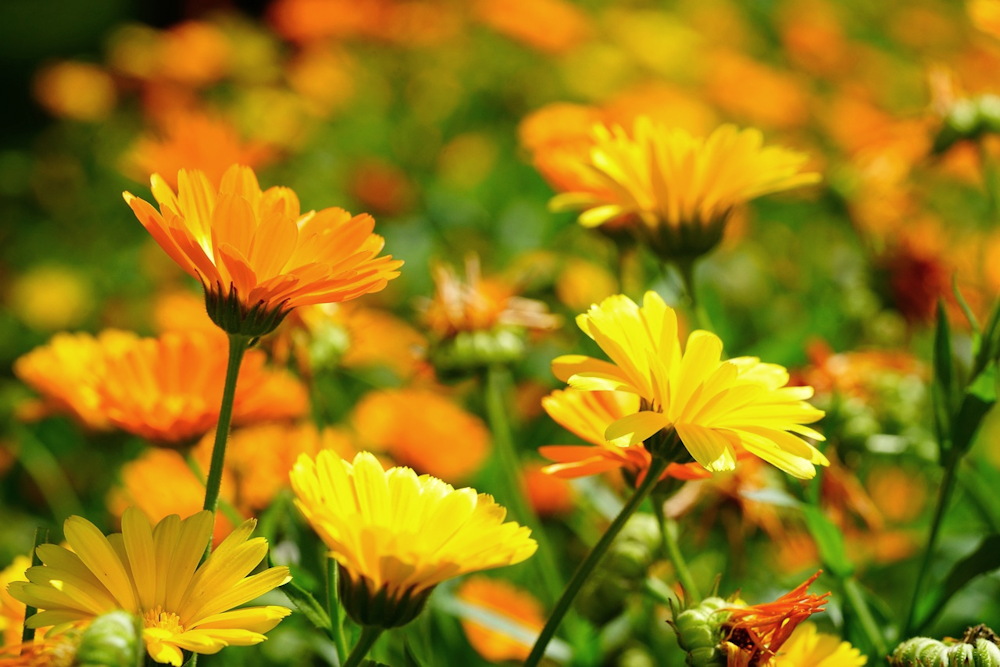
Origin and Description
Native to the Mediterranean region, pot marigold is a member of the Asteraceae family and is renowned for its striking daisy-like flowers, which can range in color from pale yellow to deep orange. The plant’s bright green leaves are lance-shaped and slightly hairy, complementing the blooms’ beauty. Pot marigold is an annual herb that can reach a height of 12 to 24 inches (30 to 60 cm), and its flowers bloom profusely during spring and summer.
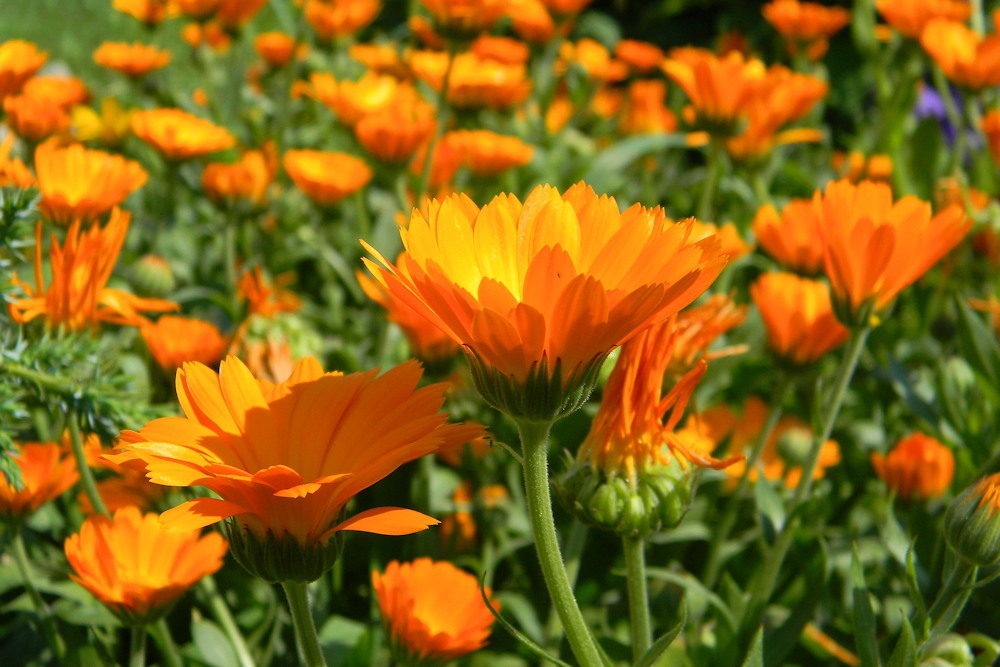
Cultivation Tips
- Growing pot marigold is relatively easy, making it an ideal choice for both novice and experienced gardeners.
- The plant thrives in full sun but can tolerate some partial shade.
- It prefers well-draining soil and is quite adaptable to various soil types.
- Sow the seeds directly in the garden after the last frost, or you can start them indoors a few weeks earlier.
- Regular watering is essential during dry spells, but be cautious not to overwater, as pot marigold dislikes waterlogged conditions.
- Deadheading spent flowers will encourage continuous blooming, and the plant will self-seed, ensuring its presence in the garden year after year.

Pot Marigold as a Medicinal Plant
Throughout history, pot marigold has been revered for its medicinal properties and is widely used in traditional herbal medicine. Its flowers contain potent compounds like flavonoids, saponins and essential oils, which possess anti-inflammatory, antimicrobial and antioxidant properties. Calendula-infused oils and creams are applied topically to soothe skin irritations, wounds and rashes.
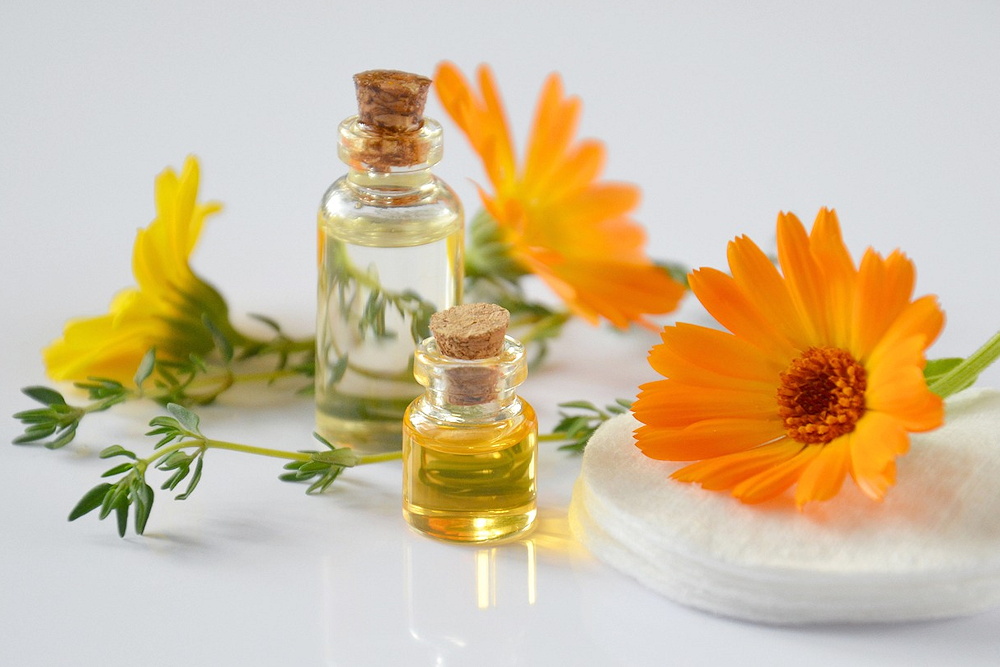
The herb’s anti-inflammatory effects also make it beneficial for treating minor burns and promoting the healing of cuts and bruises. Additionally, pot marigold has been used internally as a tea or tincture to aid digestion and support the immune system.
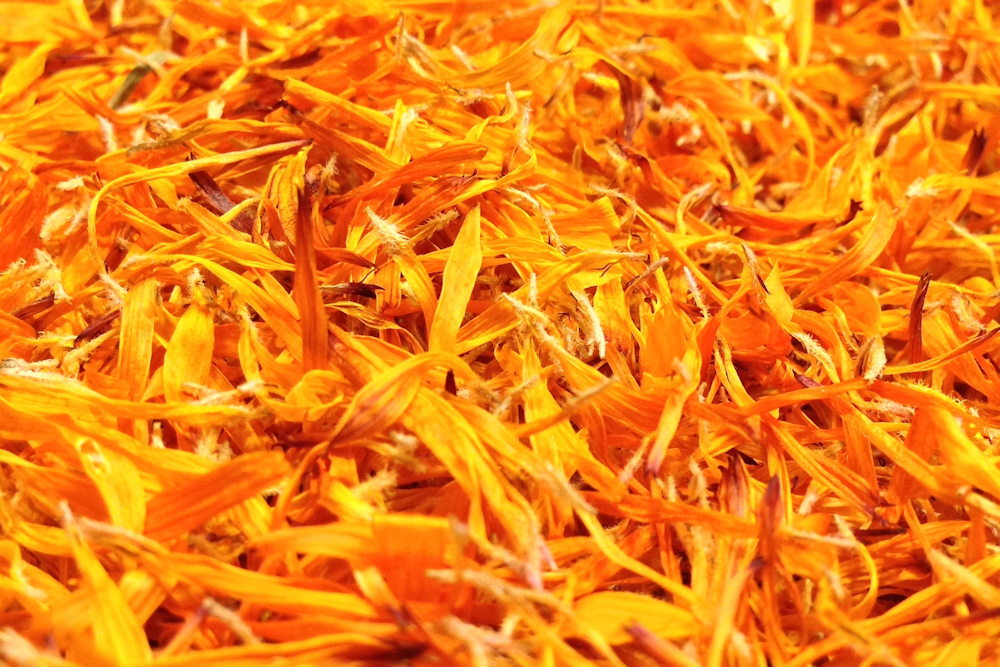
How to Make Calendula Tea
- Boil water in a kettle or saucepan.
- Place 1-2 teaspoons of dried pot marigold flowers in a tea infuser or teapot.
- Pour the hot water over the flowers.
- Let the tea steep for 5-10 minutes, depending on your desired strength.
- Remove the infuser or strain the tea to separate the flowers.
- Optionally, add honey or a sweetener of your choice for taste.
- Enjoy the soothing and flavorful pot marigold tea!
Note: Ensure that the pot marigold flowers used for the tea are from a reputable source and free from pesticides or chemicals. As with any herbal tea, it’s essential to consult a healthcare professional, especially if you have any medical conditions or are taking medications that might interact with the tea.
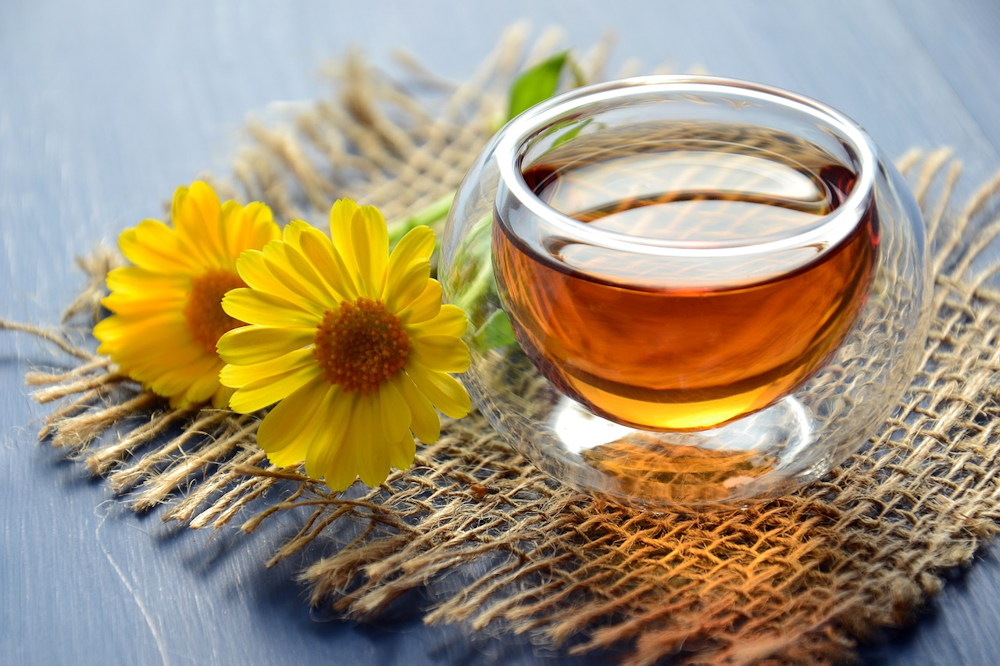
Recipe for Making Calendula Cream
Ingredients
- 1 cup of dried Calendula flowers
- 1 cup of carrier oil (e.g., olive oil, coconut oil)
- 1/4 cup of beeswax pellets
- Optional: a few drops of essential oil for fragrance (e.g., lavender, chamomile)
Instructions
- In a clean, dry glass jar, combine the dried Calendula flowers and the carrier oil of your choice.
- Stir well and ensure that all the flowers are submerged in the oil.
- Seal the jar tightly and place it in a warm, sunny spot for about 2-4 weeks. This process allows the oil to infuse with the beneficial properties of the Calendula flowers.
- After the infusion period, strain the oil through a fine mesh strainer or cheesecloth into a heat-resistant bowl.
- In a double boiler, melt the beeswax pellets over low heat.
- Once the beeswax is melted, add the infused Calendula oil and stir well to combine.
- If desired, add a few drops of essential oil for fragrance and additional skin benefits.
- Pour the mixture into clean, dry glass jars or containers and let it cool completely before sealing the lids.
- Your homemade Calendula cream is now ready to use for its soothing and skin-nourishing properties.
Note: Perform a patch test on a small area of skin before applying the cream more widely, especially if you have sensitive skin or are prone to allergies. If any irritation occurs, discontinue use. Always consult a healthcare professional if you have any concerns about using homemade products on your skin.
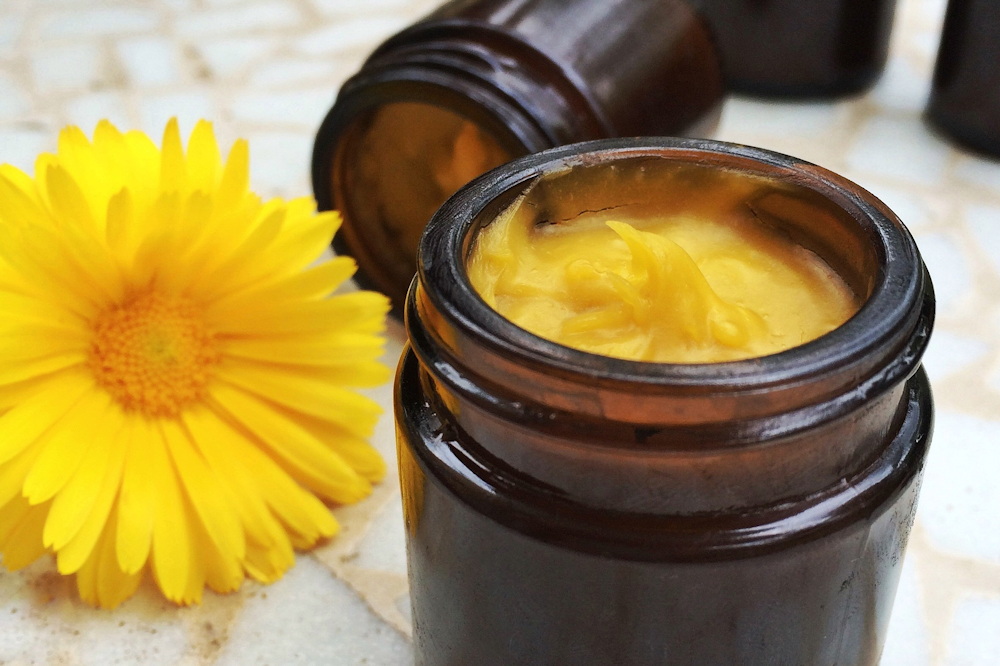
6 Interesting Facts about Pot Marigolds
- Symbolic Significance: Pot marigolds have been associated with various cultural and religious beliefs, symbolizing love, protection and the sun’s radiance.
- Culinary Uses: The petals of pot marigold flowers are edible and are often used to add color to salads, soups and stews, imparting a slightly tangy flavor.
- Natural Pest Repellant: Pot marigold is an excellent companion plant in gardens due to its pest-repellent properties. It releases chemicals into the soil that help deter harmful nematodes and other pests, making it a valuable plant for protecting nearby vegetables and herbs from certain pests.
- Historical Wound Dressing: During World War I, pot marigold flowers were used as a wound dressing for injured soldiers on the battlefield due to their antiseptic properties.
- Dyeing Agent: The bright yellow and orange flowers of pot marigold have been used historically to produce natural dyes for fabrics and cosmetics.
- Distinct from Tagetes: Despite being commonly referred to as “marigold,” pot marigold (Calendula officinalis) is a different plant from the common marigold of the Tagetes genus. While they both belong to the Asteraceae family, they have distinct appearances and properties. Pot marigold is native to the Mediterranean region, while Tagetes marigolds are native to the Americas.

Pot marigold is a captivating annual herb renowned for its golden flowers and myriad medicinal properties. Easy to grow and cultivate, it offers both ornamental beauty and practical benefits. From its historical significance to its culinary uses, pot marigold continues to charm gardeners and herbal enthusiasts alike, making it a delightful addition to any garden space.
